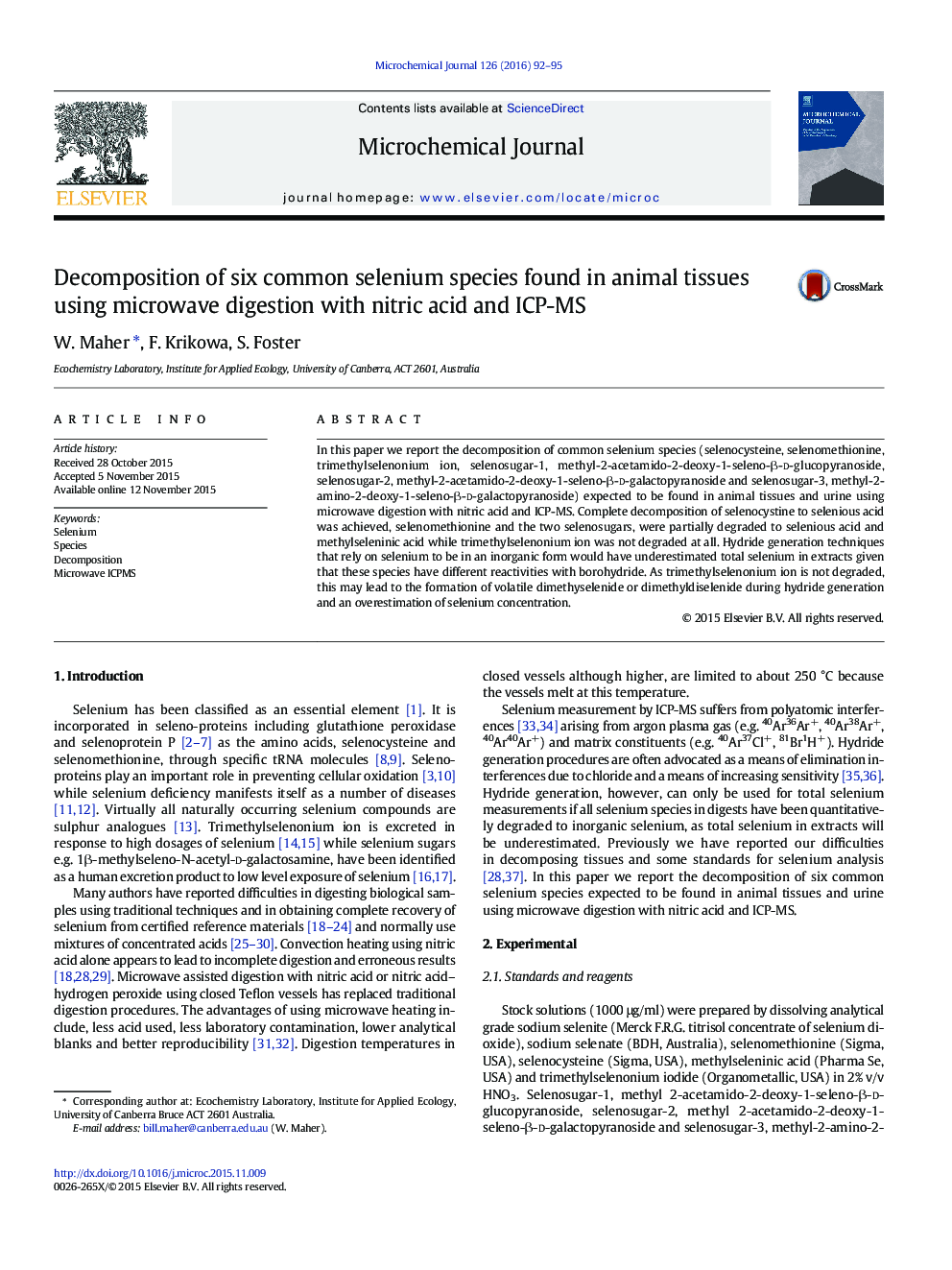| Article ID | Journal | Published Year | Pages | File Type |
|---|---|---|---|---|
| 7641442 | Microchemical Journal | 2016 | 4 Pages |
Abstract
In this paper we report the decomposition of common selenium species (selenocysteine, selenomethionine, trimethylselenonium ion, selenosugar-1, methyl-2-acetamido-2-deoxy-1-seleno-β-d-glucopyranoside, selenosugar-2, methyl-2-acetamido-2-deoxy-1-seleno-β-d-galactopyranoside and selenosugar-3, methyl-2-amino-2-deoxy-1-seleno-β-d-galactopyranoside) expected to be found in animal tissues and urine using microwave digestion with nitric acid and ICP-MS. Complete decomposition of selenocystine to selenious acid was achieved, selenomethionine and the two selenosugars, were partially degraded to selenious acid and methylseleninic acid while trimethylselenonium ion was not degraded at all. Hydride generation techniques that rely on selenium to be in an inorganic form would have underestimated total selenium in extracts given that these species have different reactivities with borohydride. As trimethylselenonium ion is not degraded, this may lead to the formation of volatile dimethyselenide or dimethyldiselenide during hydride generation and an overestimation of selenium concentration.
Keywords
Related Topics
Physical Sciences and Engineering
Chemistry
Analytical Chemistry
Authors
W. Maher, F. Krikowa, S. Foster,
